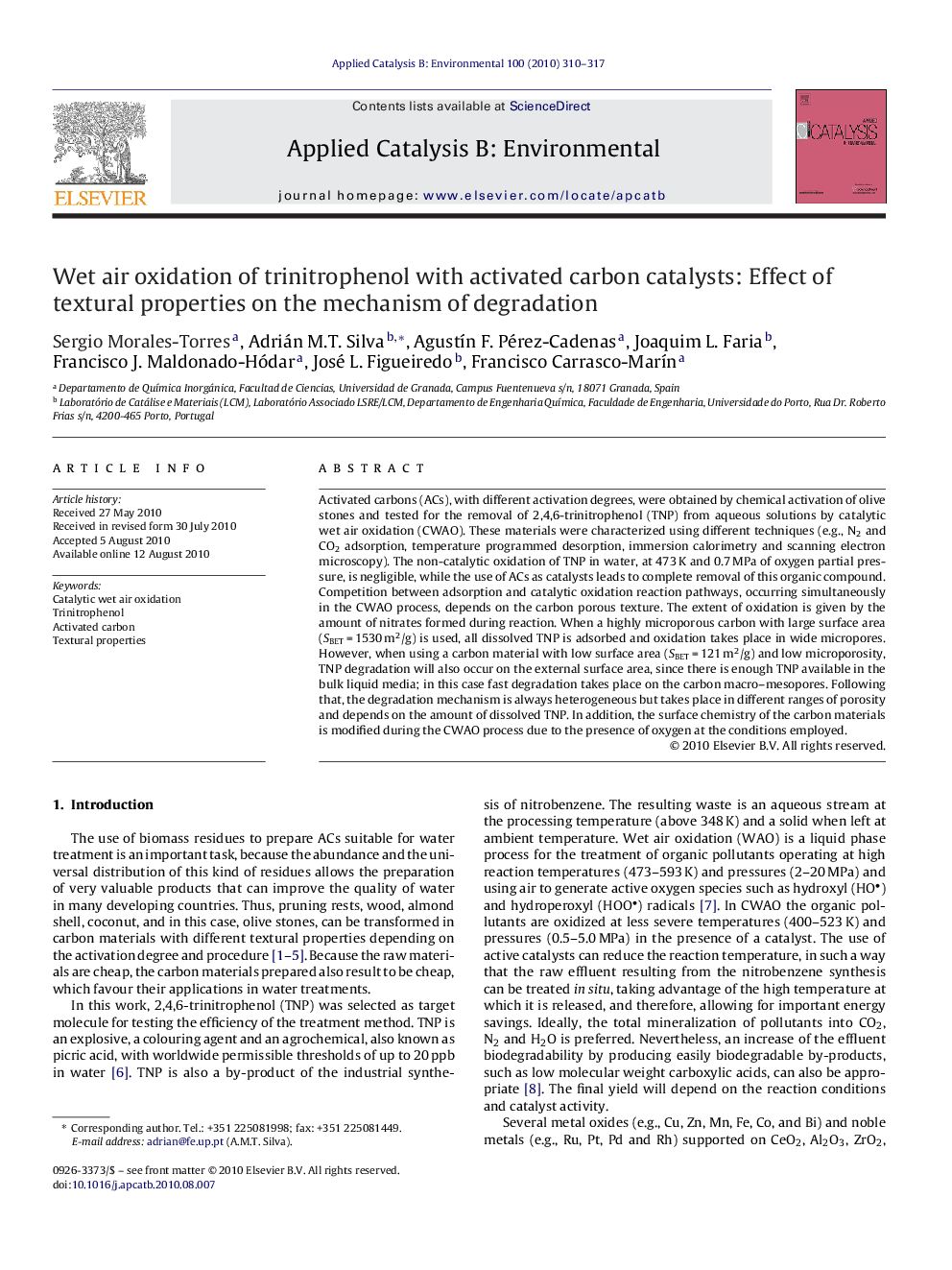| کد مقاله | کد نشریه | سال انتشار | مقاله انگلیسی | نسخه تمام متن |
|---|---|---|---|---|
| 47173 | 46462 | 2010 | 8 صفحه PDF | دانلود رایگان |

Activated carbons (ACs), with different activation degrees, were obtained by chemical activation of olive stones and tested for the removal of 2,4,6-trinitrophenol (TNP) from aqueous solutions by catalytic wet air oxidation (CWAO). These materials were characterized using different techniques (e.g., N2 and CO2 adsorption, temperature programmed desorption, immersion calorimetry and scanning electron microscopy). The non-catalytic oxidation of TNP in water, at 473 K and 0.7 MPa of oxygen partial pressure, is negligible, while the use of ACs as catalysts leads to complete removal of this organic compound. Competition between adsorption and catalytic oxidation reaction pathways, occurring simultaneously in the CWAO process, depends on the carbon porous texture. The extent of oxidation is given by the amount of nitrates formed during reaction. When a highly microporous carbon with large surface area (SBET = 1530 m2/g) is used, all dissolved TNP is adsorbed and oxidation takes place in wide micropores. However, when using a carbon material with low surface area (SBET = 121 m2/g) and low microporosity, TNP degradation will also occur on the external surface area, since there is enough TNP available in the bulk liquid media; in this case fast degradation takes place on the carbon macro–mesopores. Following that, the degradation mechanism is always heterogeneous but takes place in different ranges of porosity and depends on the amount of dissolved TNP. In addition, the surface chemistry of the carbon materials is modified during the CWAO process due to the presence of oxygen at the conditions employed.
Figure optionsDownload as PowerPoint slideResearch highlights▶ Activation of biomass residues is an excellent option to produce activated carbons. ▶ Activated carbons can be directly used as catalysts in the CWAO process. ▶ Complete removal of trinitrophenol from aqueous solutions is reached by CWAO. ▶ Degradation occurs on both external surface area and wide micropores of carbons. ▶ The presence of oxygen modifies the surface chemistry of carbon materials in CWAO.
Journal: Applied Catalysis B: Environmental - Volume 100, Issues 1–2, 11 October 2010, Pages 310–317